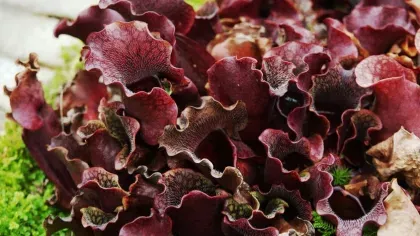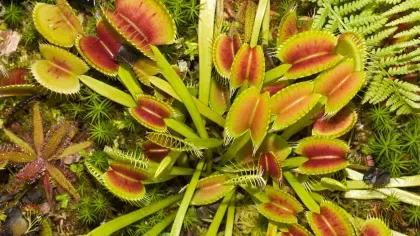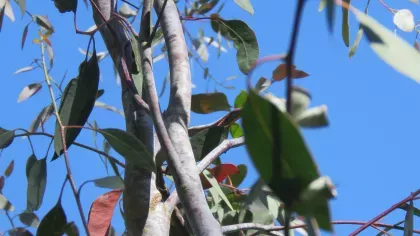
Australian pitcher plant
On this page
Carnivorous plants are a common find in Australia, with over 250 calling the island nation home.
But in the south-west of the country, a wholly unique species dwells within the damp sandy soils near rivers and swamps: the Australian pitcher plant.
Despite its name and appearance, this pitcher plant is completely unrelated to other pitcher plants, being evolutionarily closer to beans, broccoli and roses.
But thanks to the similar, low nutrient enviroments they live in, the Australian pitcher plant has evolved a similar trap structure to plants like the purple pitcher plant (Sarracenia purpurea).
When struck by wildfires, the Australian pitcher plant can regenerate from its central root.
Plant description
The Australian pitcher plant grows in a cluster of red-green specialised and non-specialised leaves. During the spring, the plant produces oval leaves that are bright green, hairy and around 15cm long.
The pitchers, or trap leaves, are small pods, around 5cm in length, with an opening at the top. They are red-green in colour, being more red the more sunlight they are exposed to. The pitchers have four ridges on their sides, covered in fine hairs. A hairy lid covers the opening, which is striped red and translucent. The rim of the pitcher has 24 small ribs that resemble needle-like teeth. Inside the pitcher is a small amount of digestive fluid.
In the summer months, a stem grows up to 60cm tall, with a cluster of small white flowers growing at the top.
Read the scientific profile for the Australian pitcher plant




Plant uses
Cultural
Because of their unique evolutionary nature, Australian pitcher plants are popular with collectors of carnivorous plants.
Did you know?
The pitchers of the plant have been found to provide a home to a number of small animals, including worms and larval flies.
Where in the world?

Dampy sandy soils near swamps and streams in the southwest of Australia.
Find it in our gardens
Kew Gardens
A botanic garden in southwest London with the world’s most diverse living plant collection.
Location
Princess of Wales Conservatory
View map of Kew GardensBest time to see
More about this plant
Other plants

Purple pitcher plant
Sarracenia purpurea

Venus flytrap
Dionaea muscipula

Morrisby’s gum
Eucalyptus morrisbyi


.jpg.webp?itok=OEXY4ft-)